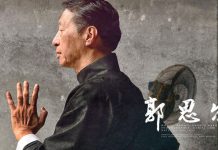Kuntaw translated means “fist way” or “way of the fist” and dates back to the mid 1300’s. Over the centuries the style has evolved into a hard and soft system integrating Japanese karate and Chinese kung fu techniques along with an array of traditional weapons. One of the distinct elements of this style of Filipino fighting art is the use of Kuntaw foot sweeps.
“You might say it (foot sweeping) is a trademark of Kuntaw,” said Master Bud Cothern, 7th degree black belt and senior Kuntaw instructor under Grand Master Carlito Lanada. “We like to wait for someone to attack then take their legs out from under them. It requires perfect timing and much practice to perfect Kuntaw foot sweeps.”
Master Cothern says that Kuntaw is a defensive art. Seldom will they initiate an attack, instead, Kuntaw stylists prefer to counter from a defensive posture which is an ideal situation to execute foot sweeps.
One popular Kuntaw foot sweeps is a back leg sweep against an attacker using a reverse punch. After blocking Master Cothern’s initial move, Grand Master Lanada hooks his rear foot (toes pointed upward) against the ankle of the attacker’s front foot.
Then he pulls him forward (a punch or strike may also be employed to off-set the attackers balance) the “hooking” or action of the sweep will put the attacker on his back with his legs in a “spread-eagle” position, allowing Grand Master Lanada the opportunity to execute a groin strike.
“We also use a smashing sweep, where we literally smash the back of the knee,” said Master Cothern. “This can be executed as a standing technique from the rear or as a ground technique smashing the front of the knee. To do this, you must hook the attacker’s rear leg with the instep of your foot to prevent him from moving backwards. Then you smash his knee with the instep or the sole of the foot.”
Master Cothern explained that when executing a Kuntaw foot sweeps it’s important to turn or drop the attacker into a position of disadvantage, opening him up for a counter strike or kick. Sometimes just stretching an attacker’s leg out is enough if it tears his muscles or ligaments.
Another popular Kuntaw foot sweeps is one that resembles a hurdlers stretch. Again, timing is everything when executing this technique. After blocking or avoiding the attacker’s punch or kick, Grand Master Lanada drops into a hurdler’s stretch position, next he hooks his heel against the attacker’s heel-trapping it against his calf and thigh. Taking the attacker to the ground is as simple as twisting the hip. Grand Master Lanada again finishes the fight with a punch to the attacker’s groin.
Although Kuntaw employs a variety of hard and soft blocking techniques, the technique of choice to counter an attack and to set up a sweep is with alternate blocking.
“Alternate blocking is when both hands are working in a short circle with one hand doing a soft upward block while the other hand is simultaneously executing a soft outside block,” Master Cothern explained. “If you’re using this block to set up a sweep, the block going down will catch the wrist while the one going up will catch him on the elbow then use that to take him down with a sweep. Or, you might use the alternating block to stop a kick and punch combination.”
While Kuntaw foot sweeps are an important element in the Kuntaw arsenal they are by no means the only way of dropping an attacker. Kicks are also a vital part of the Kuntaw arsenal. One of Master Cothern’s favorite techniques is the back kick.
“Again, since Kuntaw is a defensive art I like to execute a kick based on what my opponent does,” said Master Cothern. “In Kuntaw we like to place our kicking leg in close and tight. When we do a spinning back kick it’s just like we’re doing a front kick in the other direction. One way to line up your target is to cross your kicking leg behind your calf, then turn suddenly, and using the power of your hip, thrust the kick in a straight line into your target.”
Another distinctive block used frequently in Kuntaw is the “chicken beak” block.
“This block is done using the wrist formed to look like a chicken’s beak while the other hand is blocking down,” said Master Cothern. “The chicken beak is a very powerful block that will inflict more pain because you’re using a smaller area to block with and it’s very fast because of the up and out angle with which it’s used. Another advantage of the chicken block is that the hand is in position to twist and grab, adding leverage to your sweeping technique.”
One of the most noticeable differences between Kuntaw and other arts is the way the execute blocks with their arms. Instead of slamming the bone edge of the arm or fist against an attacker, Kuntaw blocks with the flat side of the arm and fist.
“The way we teach blocking is we bring the arm out as if we are going to block with the bone of the arm, like a Japanese stylist would do, but then we rotate the arm two inches, thus blocking with the muscle part of the arm,” said Master Cothern. “The same goes for a low block or a double block. It’s almost impossible to build up the bone, and we feel that the way we block works in harmony with the laws of nature and physics.”






